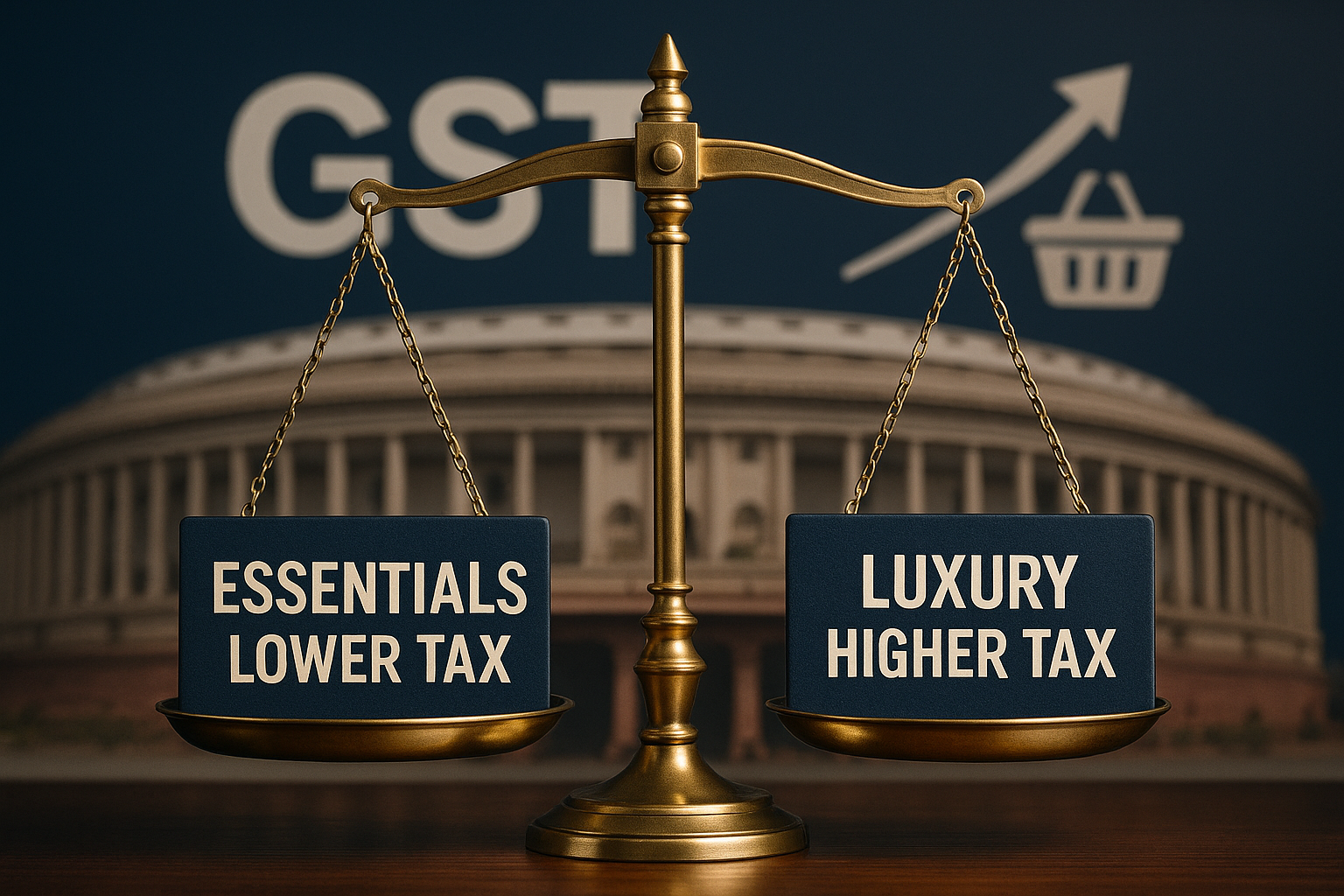India’s long-debated GST reforms have taken a major step forward with the Group of Ministers (GoM) approving a simplified two-slab structure. The move is expected to ease compliance for businesses, reduce classification disputes, and bring greater transparency to indirect taxation. For households and enterprises alike, the reform is being hailed as a balancing act—making essential goods more affordable while sustaining revenue for the government.
Key Highlights of GST 2-Slab Reform
1. Simplification of Tax Structure
The GoM has cleared a two-slab GST system, replacing the current multi-tiered rate structure.
Essential and mass-consumption goods will be taxed at a lower slab, while non-essentials and luxury items will fall under a higher slab.
2. Relief for Consumers
Daily-use items are expected to become cheaper.
Aimed at reducing the tax burden on the middle class and farmers by rationalizing rates.
3. Business Impact
Simplified classification reduces litigation risk for corporates.
Streamlined compliance will ease reporting for MSMEs and startups.
4. Revenue Considerations
The government expects overall revenue neutrality while ensuring stable inflows for both Centre and States.
Lower compliance costs could increase tax base participation.
Why This Matters
The GST 2-slab reform signals a landmark shift in India’s tax administration:
For Consumers: A more affordable consumption basket and reduced inflationary pressures.
For Businesses: Clarity in tax classification, smoother compliance, and reduced litigation.
For Policy: A reform milestone that strengthens the credibility of India’s indirect tax system globally.












